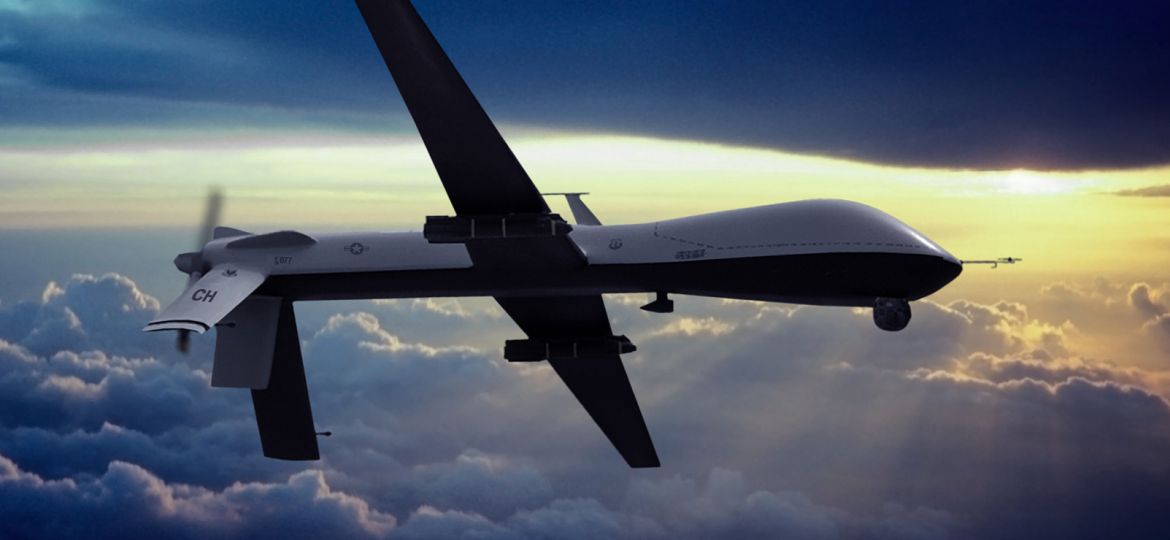
WHY THIS MATTERS IN BRIEF
More countries are using increasingly advanced electronic warfare and jamming systems to disable everything from drones to entire fleets and countering them has become a top priority for military and security services around the world.
Radar used to be a slow science. Electronic warfare is a blanket term that encompasses the radar signals used to detect an attack, the radios used to communicate that the attack is coming, and the specific radio interference sent to confuse enemy radars as they’re attacking. And in the Cold War, every part of this used to be analog.
“In Vietnam we learned what an SA-2 radar signal started looking like,” says Joshua Niedzwiecki, director of the Sensor Processing and Exploitation group at BAE Systems, “the paradigm then was we saw a new signal in an environment and got a lot of experts and put them in a room in a laboratory and had them start to dissect what those characteristics were, so we could build a countermeasure. That process took months.”
“The current paradigm is extremely time-consuming, extremely cumbersome, and in the past, this was acceptable because the radio frequency technology was very static. Everything was analog hardware. If I built a radar system, all the things that make that signal look like it looks, were driven by analog components,” Niedzwiecki continued, “so they weren’t prone to change for years. Nowadays, you see radar that on every single radar pulse can change what operating frequency they’re working at, what their pulse width is, what their bandwidth is, because of digital processing technology and software-defined radios. By the time you’ve gone back to the lab to study what you saw, the threat is different, by the time you come back from your mission, the threat is different.”
The threat in electronic warfare is manifold. A hostile radar can guide missile after missile at incoming aircraft. A jammer that interferes with GPS can keep bombs from falling where they’re supposed to, get troops lost on the ground or upset all manner of platforms and a strong signal at the right frequency can interfere with soldier’s radios, leaving them suddenly cut off from commanders and friends. On its own this is frustrating but combined with the other, lethal parts of war – kinetics as the pentagon call them – what happens in the electromagnetic spectrum can win or loose battles.
BAE are trying to combat this new digital threat and they’ve revealed what they call a “lightweight, handheld tactical sensor” for cognitive electronic warfare. Developed for DARPA, the sensor is designed for soldiers and marines to carry into battle, where it will identify and classify new signals. In the previous, Cold War-era approach, US troops went into battle knowing only the signals already identified, and after detecting a new signal, it would take months to have a response. Many systems, even ones that already had signals recorded in peacetime, can, according to Niedzwiecki, “have a “war reserve” mode, a waveform signature that we may not have seen before,” so there’s no guarantee that adapting to an old signal will protect against the signals that replace it.
Cognitive electronic warfare takes the burden of deciphering and countering new signals out of human minds in a lab, and entrusts it instead to AI and machine learning. If the cognitive system sees a signal similar to one it has seen before, it can respond accordingly. If the interference makes the radio signal weak, then the cognitive system might just put more power into the same radio signal. If the jamming makes some parts of the spectrum unworkable, then the cognitive system could look for a part of the spectrum that’s still open for communication, and redirect signals there. If the approach works, as captured by bit-error rate, the system learns and remembers. If it doesn’t, the cognitive system can try a different approach, changing up its response until something gets through but, most importantly, the new AI system can try millions of permutations per second – redressing the balance and giving soldiers and the armies that support them a fighting chance.
“If I’m a tactical soldier, maybe I’m trying to detect and locate certain enemy signals or understand where and how the enemy is communicating in that tactical battlespace,” says Niedzwiecki, “this technology allows me to make better sense of what signals are in that electromagnetic spectrum and how they’re being used to better inform my tactical maneuvers.”
As countries, such as Russia and China increase their use of sophisticated electronic jamming systems new cognitive AI based EW solutions, like this one will become more and more important, but there are civilian applications as well – and it’s not just to help protect airports, for example, against rogue drones, these technologies could be used to improve the quality of the radio signals used in everyday life and, inevitably, whatever the purpose, it’s where the technology is headed.
















